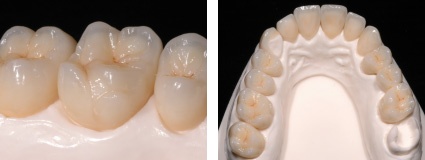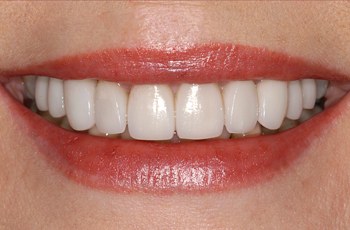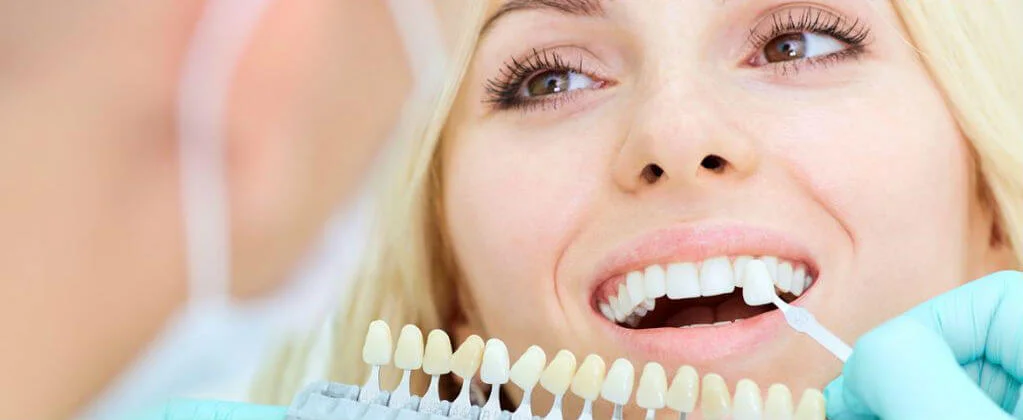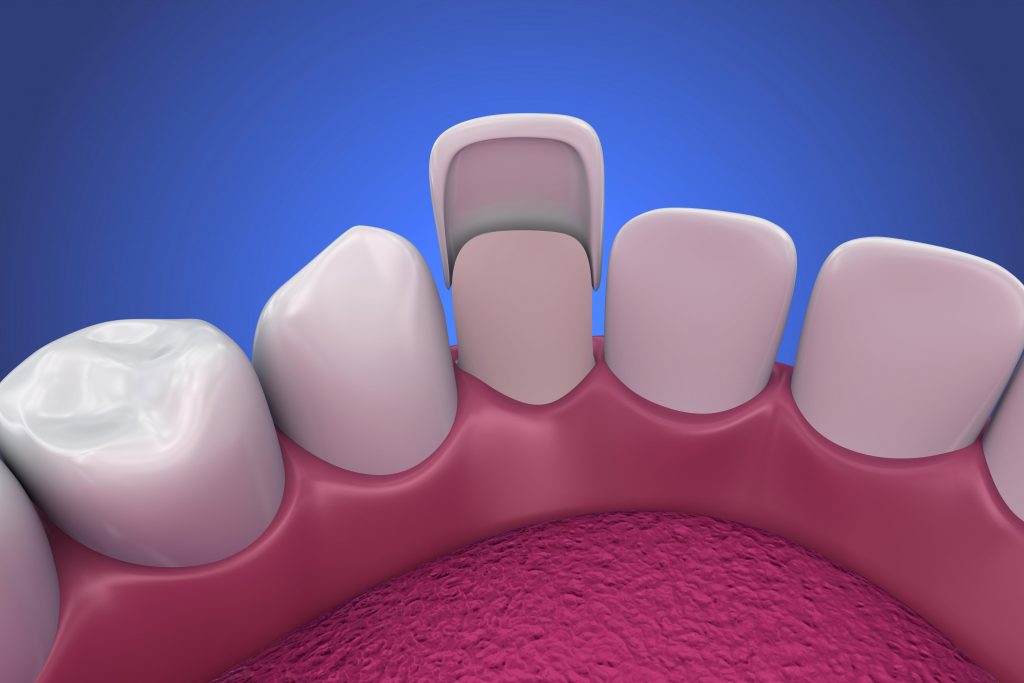You Don’t Need to Have Your Teeth Shaved Down to Pegs to Get Veneers
Veneers correct many dental and offer patients a quick and easy fix to smile imperfections.

The number of patients wishing to improve and enhance their smiles throughout the UK is growing substantially.
Becoming increasingly popular, treatments like veneers have become more sought out than ever before.
“Trend of shaving teeth down to PEGS to get ‘perfect smile’ with veneers may leave you needing dentures, dentists say.” The Sun
But with this, many patients are misinformed about the veneer process.
Be wary of trends
Popular celebrity culture has seen certain celebrities get free, bulky veneers (crowns) abroad – this has seen an increase in dental tourism, where patients seek cheaper dental treatments at a higher cost for their overall dental health.
Here at the Perfect Smile, we know that cosmetically improving your smile is essential, but we will always do what is best for your oral health to preserve it and strengthen it.
There’s no going back
Dangerous trends and procedures where teeth are shaved down to pegs to achieve the perfect smile can be avoided and is not necessary.
The consequences of pursuing these types of faulty treatments can leave some patients needing dentures later on in life.
If you are considering getting veneers, we offer minimally invasive procedures which do not need to alter the shape or size of your existing tooth.
Book a free consultation with us today on 01992 552115.
Keep your original tooth intact.
Shaving your teeth down is not your only option.
There are new and innovative brands and veneer techniques due to modern technology, allowing patients to continue with their procedure without shaving or drilling.
Read: Leading cosmetic dentist explains why you should not be scared to get veneers.
There are two types of veneers; porcelain and composite
Composite veneers directly bond a tooth-coloured material to the tooth; our dentists then shape the material (this type of veneer usually requires no shaving). More.
Porcelain veneers use instead of a very thin layer of solid porcelain that’s crafted in a specialist dental lab – this kind of veneer only requires a small amount of tooth prep to the tooth’s surface for it to bond too. More.
Porcelain veneer options include:
- Durathin (0.3mm): Wafer-thin, translucent layers of porcelain are applied to the tooth’s front surface. The application process involves no grinding or shaving preparation in advance.
- Ultrathin (0.2/0.4mm): Very strong and extremely thin porcelain veneers require little to no shaving of the original tooth.
- Lumineers (0.2mm): This particular type of no-prep veneers is probably the most well-known and currently recommended in the dental industry. They are extremely thin and are perfect for patients looking for the most natural finish.
Veneer sizes:
- Traditional porcelain veneers: 0.5mm. Learn more.
- Durathin: 0.3mm (often no-prep). Learn more.
- Ultrathin: 0.2mm/0.4mm (often no-prep). Learn more.
- Lumineers: 0.2mm (often no-prep). Learn more.
The real differences
Pre-veneer smiles showing shaved down teeth to pegs to prepare for a new cosmetic smile is not the correct application process.
Our expert and specialist cosmetic dentists here at The Perfect Smile attest that dentists should not file down natural teeth to prepare or hold traditional veneers when other non-invasive procedures are available.
Traditional veneers are thin-like shells that cover only the front portion of your tooth – just like false nails would be applied on top of a nail.
What should the procedure look like?
Crowns are increasingly marketed as veneers
Having teeth shaved down this way is often seen with dental crowns (covers the entire tooth like a cap). When positioned, crowns can cause problems like pain and nerve damage and cost you more money with dental bills in the future.
It’s crucial that patients remain wary of what they see online and should only trust experienced and trained cosmetic dentists, who can show you outstanding before and afters and educate you about the procedure beforehand.

Veneers Vs Crowns
Veneers and crowns are two very different treatments.
However, we often see sweeping trends where patients seeking fast and cheap veneer treatments have crowns applied rather than veneers.
And a patient’s oral health and structure need to understand the difference between the two so that they can be well-informed enough to make the right decision.
It is not a marketing ploy; veneers are not supposed to be thick-looking or unnatural.
Veneers are only applied to the tooth’s front surface using very thin layers of porcelain (in millimetres).
For expert advice from a very experienced cosmetic dentist, call us on 01992 552115, or use the button below to book a free consultation to identify the best veneer treatment moving forward.
What are crowns and veneers used for?
They are both designed to improve the look and function of your teeth.
They both have very strong success rates as popular dental restoration methods, even though their procedures vary.
The main differences:
Veneers use thin layers of porcelain or other materials like composite, which can be around 1mm in thickness that is bonded directly to your original tooth.
Crowns can be around 2mm in thickness and will cap over the entire tooth.
Crowns can also be constructed from porcelain materials.
Teeth fitted with crowns may experience some movement, which can alter your bite. If this happens, your crown will need to be adjusted.
When it comes to price, they can both be costly procedures. However, this can vary per patient case.
Crowns can range from £1,000 to £3,500, which does not include additional procedures
The more natural-looking veneers, however, can cost anywhere from £700 per tooth.
See our costs here.
What is the difference between veneer preparation and crown preparation?
Veneers require minimal preparation.
The only work needed to prepare the tooth for the veneer will be a small etching of the enamel off the tooth’s front surface for the veneer to adhere to.
Whereas, in the case of crowns, heavier preparation is required.
 Therefore, crowns require shaving and shaping the entire tooth for the crown to fit – this can create a stumpy appearance often seen on many celebrity smiles that have their treatments carried out abroad.
Therefore, crowns require shaving and shaping the entire tooth for the crown to fit – this can create a stumpy appearance often seen on many celebrity smiles that have their treatments carried out abroad.
To place a crown will require more removal of the natural tooth – this undeniably weakens the tooth and impacts the overall structure, where the tooth is vulnerable to further dental issues in the future.
We use crowns more commonly as a final restoration for dental implants or in cases where root canals have failed.
As they cover the entire tooth, they are bulkier and larger, making them, unlike wafer-thin veneers!
Which one is right for me?
Crowns are often prescribed when the tooth has a large filling, has a root canal or is heavily broken or cracked.
In inpatient cases where the tooth is still intact and the procedure is purely for cosmetic reasons, veneers tend to be the best option.
They can also be used for minor shape corrections, discolouration, fluorosis, bite and misalignment problems.
Veneer Guide:
- Minimal and ‘no-prep Dental Veneers: What’s the difference?
- What are the best ways to look after your veneers?
- Our approach to veneers
- Lumineers vs veneers?
- Loose veneer replacement
- Treatment steps
- Veneer before and afters
- Pricing and payment plans
- The application process
- BACD information leaflet
- Improved eating
- Pain-free placements
- Correct care and maintenance
- Reported longevity (up to 20 years)
- Preserving the existing teeth
- Can veneers fail?





